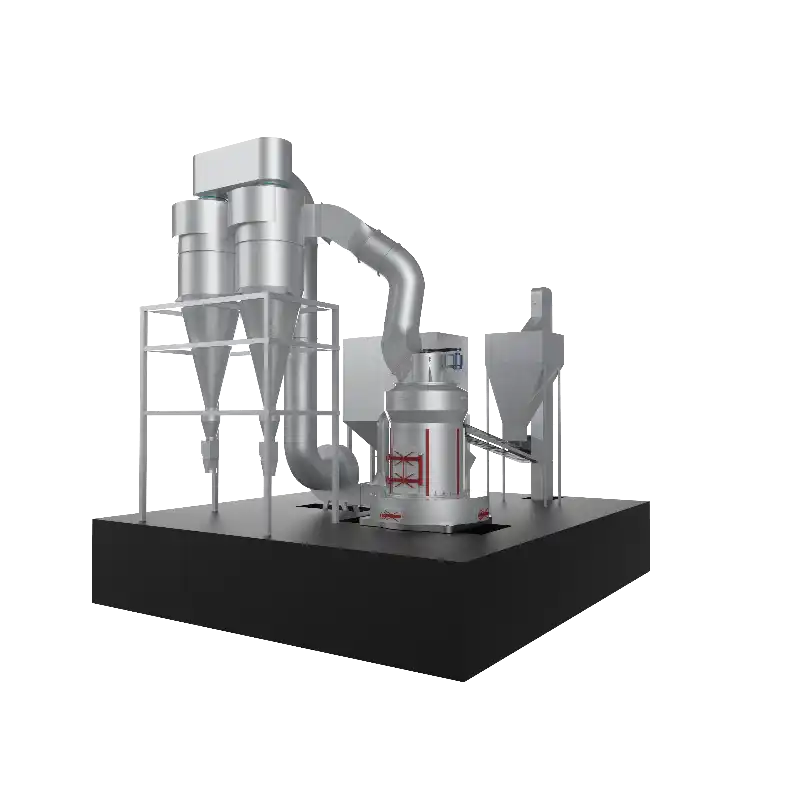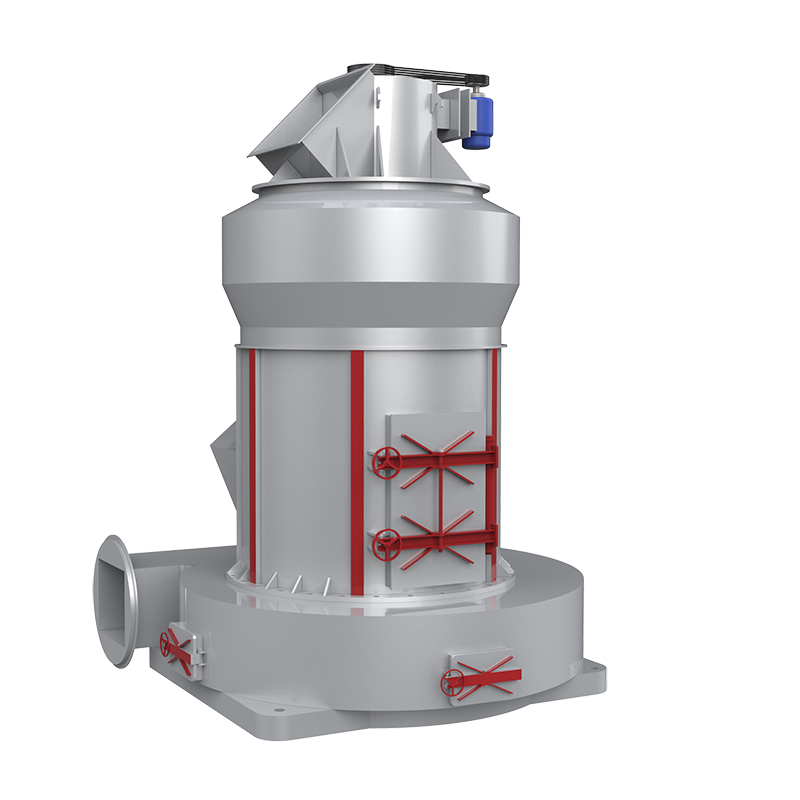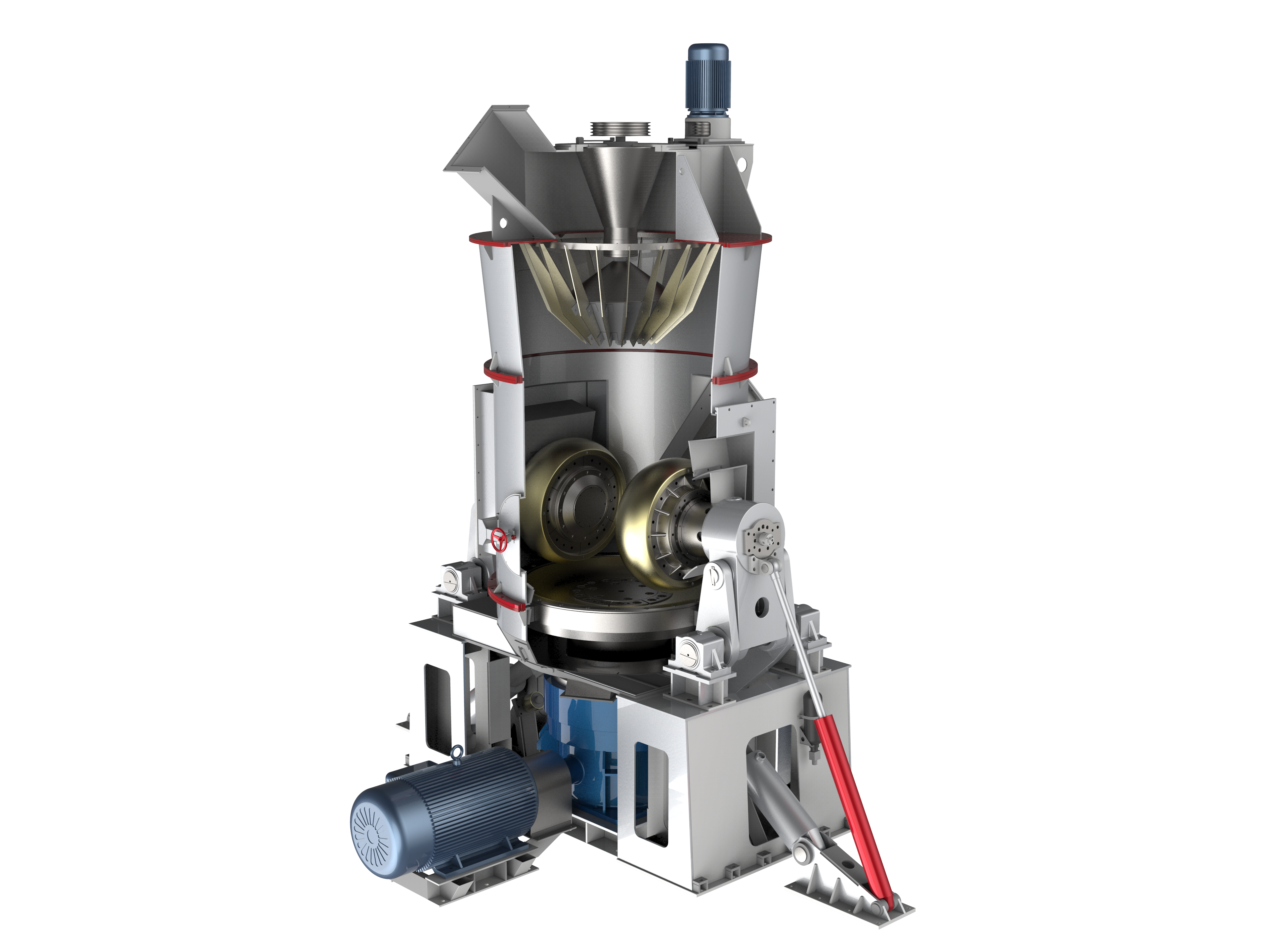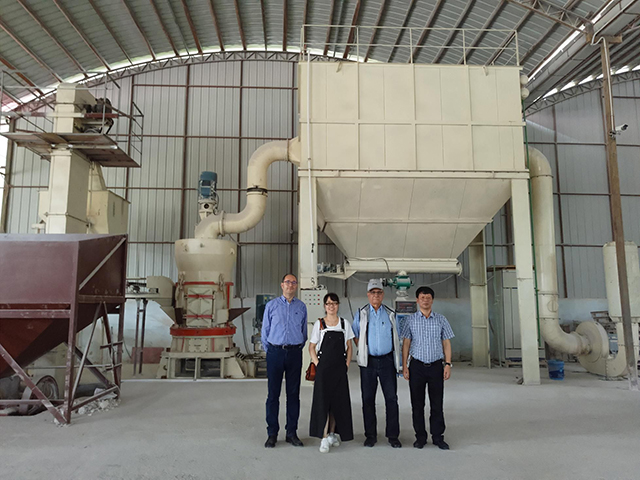Contents Catalog
- 1 Composition
- 2 Physical and chemical properties
- 3 Origin of ore deposits
- 4 Soil classification
- 5 Genetic classification
- 6 Industrial type
- 7 Process characteristics
- 8 Particle size distribution
- 9 Plasticity
- 10 Binding property
- 11 Viscosity
- 12 Drying performance
- 13 Sinterability
- 14 Firing shrinkage
- 15 Refractory
- 16 Suspension
- 17 Selectivity
- 18 Adsorption
- 19 Chemical stability
- 20 Electrical insulation
- 21 Processing method
- 22 Separation method
- 23 Industrial Uses
Kaolin is a non-metallic mineral, a clay and clay rock mainly composed of kaolinite clay minerals. Because it is white and fine, it is also called dolomite. It is named after Gaoling Village in Jingdezhen, Jiangxi Province.
Its pure kaolin is white, fine, soft and has good physical and chemical properties such as plasticity and fire resistance. Its mineral composition is mainly composed of kaolinite, halloysite, hydromica, illite, montmorillonite, quartz, feldspar and other minerals. Kaolin has a wide range of uses, mainly in papermaking, ceramics and refractory materials, secondly in coatings, rubber fillers, enamel glazes and white cement raw materials, and a small amount is used in plastics, paints, pigments, grinding wheels, pencils, daily cosmetics, soaps, pesticides, medicines, textiles, petroleum, chemicals, building materials, national defense and other industrial sectors.
| Attribute | Details |
|---|---|
| Foreign Name | Kaolin |
| Category | Non-metallic mineral |
| Chemical Formula | Al₂O₃·2SiO₂·2H₂O |
| Molecular Weight | 258 |
| Color | White, soft mud-like |
| Applications | Papermaking, ceramics, refractory materials, etc. |

Composition
Kaolinite minerals are composed of kaolinite cluster minerals such as kaolinite, dickite, nacre, and halloysite, and the main mineral component is kaolinite.
The crystal chemical formula of kaolinite is 2SiO2●Al2O3●2H2O, and its theoretical chemical composition is 46.54% SiO2, 39.5% Al2O3, and 13.96% H2O. Kaolinite minerals belong to 1:1 type layered silicates, and the crystals are mainly composed of silicon-oxygen tetrahedrons and sulphur-oxygen octahedrons, in which the silicon-oxygen tetrahedrons are connected in a two-dimensional direction by sharing the vertex angle to form a hexagonal grid layer, and the unshared apex oxygen of each silicon-oxygen tetrahedron is facing one side; the apex oxygen of the silicon-oxygen tetrahedron layer shared by the silicon-oxygen tetrahedron layer and the sulphur-oxygen octahedron layer forms a 1:1 type unit layer.
Physical and chemical properties
Properties: mostly dull, white and delicate when pure, gray, yellow, brown and other colors when containing impurities. The appearance can be loose soil blocks or dense rock blocks depending on the cause.
Density: 2.54-2.60 g/cm3.
Melting point: about 1785℃.
It has plasticity, wet soil can be molded into various shapes without breaking, and can remain unchanged for a long time.
Origin of ore deposits
Kaolin is a common and very important clay mineral in nature. It is formed by weathering of feldspar or other silicate minerals in igneous rocks and metamorphic rocks in an acidic medium lacking alkali metals and alkaline earth metals.
Soil classification
The minerals contained in kaolin in nature are mainly divided into clay minerals and non-clay minerals. Clay minerals mainly include kaolinite group minerals and a small amount of montmorillonite, mica and chlorite; non-clay minerals mainly include feldspar, quartz and aluminum hydrates, as well as some iron minerals such as hematite, siderite, limonite, etc., titanium minerals such as rutile, etc. and organic matter such as plant fiber, etc. Clay minerals are the main factors that determine the properties of kaolin.
Genetic classification
Based on the genesis of kaolin deposits, according to the differences in mineralization geology, geographical conditions, deposit scale, ore body morphology and occurrence characteristics, ore material components, etc. reflected by different mineralization processes, the “Geological Exploration Specifications for Kaolin Minerals” divides China’s kaolin deposits into three types and six subtypes.
- Weathering type: divided into weathering residual subtype and weathering elution subtype;
- Hydrothermal alteration type: divided into hydrothermal alteration subtype and modern hot spring alteration subtype;
- Sedimentary type: divided into sedimentary and sedimentary-weathering subtypes and kaolinite clay rock subtypes in coal-bearing strata.
Industrial type
According to its texture, plasticity and mass fraction of sand, it is divided into three types:
- Hard kaolin: hard, no plasticity, and plasticity after crushing and fine grinding.
- Soft kaolin: soft, strong plasticity, sand mass fraction <50%;
- Sandy kaolin: loose, weak plasticity, sand mass fraction >50%.
Process characteristics
Whiteness and brightness
Whiteness is a key parameter for evaluating kaolin quality. High-purity kaolin is white, with whiteness categorized into natural and calcined types. For ceramics, calcined whiteness is more critical, as higher values indicate better quality. Natural whiteness is measured after drying at 105°C, while calcined whiteness is assessed after calcination at 1300°C. A whiteness meter measures light reflectivity at wavelengths of 3800-7000Å (1Å = 0.1nm), comparing the sample’s reflectivity to a standard (e.g., BaSO4, MgO) to determine the whiteness value (e.g., 90 means 90% of the standard’s reflectivity).
Brightness is a process property similar to whiteness, equivalent to whiteness under irradiation with 4570Å (angstroms) wavelength light.
The color of kaolin is mainly related to the metal oxides or organic matter it contains. Generally, it is rose red or brownish yellow when containing Fe2O3; light blue or light green when containing Fe2+; light brown when containing MnO2; and light yellow, gray, green, black and other colors when containing organic matter. The presence of these impurities reduces the natural whiteness of kaolin. Among them, iron and titanium minerals will also affect the calcined whiteness, causing spots or melting scars on porcelain.
Particle size distribution
Particle size distribution refers to the proportion (expressed as percentage) of particles in natural kaolin within a given continuous range of different particle sizes (expressed in millimeter or micron mesh).
The particle size distribution characteristics of kaolin are of great significance to the selectivity and process application of ore. Its particle size has a great influence on its plasticity, mud viscosity, ion exchange capacity, molding performance, drying performance, and sintering performance.
Kaolin mines need to be processed technically. Whether it is easy to process to the fineness required by the process has become one of the standards for evaluating ore quality. Various industrial sectors have specific particle size and fineness requirements for kaolin for different purposes. For example, the United States requires that the content of kaolin used as coatings is less than 2μm, accounting for 90-95%, and the content of paper fillers is less than 2μm, accounting for 78-80%.
Plasticity
The mud formed by kaolin combined with water can be deformed under the action of external force. After the external force is removed, the property of still maintaining this deformation is plasticity.
Plasticity is the basis of kaolin molding process in ceramic green bodies and is also the main process technology indicator.
Plasticity index and plasticity index are usually used to indicate the size of plasticity. Plasticity index refers to the liquid limit moisture content of kaolin clay minus the plastic limit moisture content, expressed as a percentage, that is, W plasticity index = 100 (W liquid limit – W plastic limit).
The plasticity index represents the molding performance of kaolin clay. It can be obtained by directly measuring the load and deformation size of the mud ball when it is crushed under pressure using a plasticizer. It is expressed in kg·cm. The higher the plasticity index, the better its molding performance. The plasticity of kaolin can be divided into four levels.
Plasticity strength Plasticity index Plasticity index
Strong plasticity > 153.6
Medium plasticity 7-152.5-3.6
Weak plasticity 1-7 < 2.5
Non-plasticity < 1
Binding property
Binding property refers to the property of kaolin combined with non-plastic raw materials to form a plastic mud mass with a certain dry strength. The binding capacity is determined by adding standard quartz sand to kaolin (the mass composition of which is 70% of the 0.25-0.15 particle size and 30% of the 0.15-0.09mm particle size).
The highest sand content when it can still maintain a plastic mud mass and the flexural strength after drying are used to judge its level. The more sand is added, the stronger the binding capacity of this kaolin. Generally, kaolin with strong plasticity also has strong binding capacity.
Viscosity
Viscosity refers to a characteristic of the fluid that hinders its relative flow due to internal friction. Its size is expressed by viscosity (internal friction acting on 1 unit area), and the unit is Pa·s
The viscosity is generally measured by a rotational viscometer, measured by the rotation speed in a kaolin slurry containing 70% solid content. In the production process, viscosity is of great significance. It is not only an important parameter in the ceramic industry, but also has a great impact on the papermaking industry.
Thixotropy refers to the property that mud that has thickened into a gel and no longer flows becomes a fluid after being stressed, and gradually thickens back to its original state after being still. Its size is expressed by the thickening coefficient, and is measured by an outflow viscometer and a capillary viscometer.
Viscosity and thixotropy are related to the mineral composition, particle size and cation type in the mud. Generally, the viscosity and thickening coefficient are high for mud with a high montmorillonite content, fine particles, and sodium-based exchangeable cations. Therefore, in the process, it is common to add highly plastic clay and increase fineness to increase its viscosity and thixotropy, and to reduce it by adding diluted electrolytes and water.
Drying performance
Drying performance refers to the performance of kaolin clay during the drying process. Including drying shrinkage, drying strength and drying sensitivity.
Drying shrinkage refers to the shrinkage of kaolin clay after dehydration and drying. Kaolin clay generally dehydrates and dries at a temperature of 40-60℃ and no more than 110℃. As the water is discharged, the distance between the particles is shortened, and the length and volume of the sample will shrink. Drying shrinkage is divided into linear shrinkage and volume shrinkage, which is expressed as the percentage of length and volume change after the kaolin clay is dried to constant weight.
The drying linear shrinkage of kaolin is generally 3-10%. The finer the particle size, the larger the specific surface area, the better the plasticity, and the greater the drying shrinkage. The same type of kaolin has different shrinkage due to different water admixtures. The more water admixtures, the greater the shrinkage. In the ceramic process, if the drying shrinkage is too large, the body is prone to deformation or cracking.
Drying strength refers to the flexural strength of the clay after it is dried to constant weight.
Drying sensitivity refers to the degree of difficulty of deformation and cracking tendency when the green body is dried. The higher the sensitivity, the easier it is to deform and crack during the drying process. Generally, kaolin with high drying sensitivity (drying sensitivity coefficient K>2) is prone to defects; those with low drying sensitivity (drying sensitivity coefficient K<1) are safer during drying.
Sinterability
Sinterability refers to the property of the material spontaneously filling the gaps between particles and densifying when the formed solid powdered kaolin green body is heated to a temperature close to its melting point (generally over 1000℃). The state in which the porosity drops to the minimum value and the density reaches the maximum value is called the sintering state, and the corresponding temperature is called the sintering temperature.
When heating continues, the liquid phase in the sample continues to increase, and the sample begins to deform. At this time, the temperature is called the transformation temperature. The interval between the sintering temperature and the transformation temperature is called the sintering range. In the ceramic industry, the sintering temperature and sintering range are important parameters for determining the green body formula and selecting the kiln type.
It is suitable for the sample to have a low sintering temperature and a wide sintering range (100-150°C). The sintering temperature and sintering range can be controlled by mixing fluxing raw materials and mixing different types of kaolin in proportion.
Firing shrinkage
Firing shrinkage refers to the shrinkage of the dried kaolin blank due to a series of physical and chemical changes (dehydration, decomposition, formation of mullite, melting of fusible impurities to form glass phase filling the gaps between particles, etc.) during the firing process, which leads to the shrinkage of the product. It is also divided into linear shrinkage and volume shrinkage.
Like drying shrinkage, too much firing shrinkage can easily lead to cracking of the blank. In addition, during roasting, if a large amount of quartz is mixed in the blank, it will undergo a crystal transformation (trigonal → hexagonal), causing its volume to expand and also produce reverse shrinkage.
Refractory
Refractory refers to the ability of kaolin to resist high temperatures without melting. The temperature at which it softens and begins to melt under high temperature operation is called refractoriness. It can be directly measured using a standard temperature cone or a high-temperature microscope, or calculated using the empirical formula of M. A. Bezbelodov.
Refractoriness t (℃) = [360 + Al2O3 – R2O] / 0.228
Where: Al2O3 is the mass percentage of Al2O3 when the sum of the analysis results of SiO2 and Al2O3 is 100; R2O is the mass percentage of other oxides when the sum of the analysis results of SiO2 and Al2O3 is 100.
The error of calculating the refractoriness by this formula is within 50℃.Refractoriness is related to the chemical composition of kaolin. The refractoriness of pure kaolin is generally around 1700℃. When the content of hydromica and feldspar is high and the content of potassium, sodium and iron is high, the refractoriness decreases. The minimum refractoriness of kaolin is not less than 1500℃. The industrial sector stipulates that the R2O content of refractory materials is less than 1.5-2%, and Fe2O3 is less than 3%.
Suspension
Suspension and dispersibility refer to the properties of kaolin dispersed in water that are difficult to precipitate. Also known as anti-flocculation. Generally, the finer the particle size, the better the suspension. Kaolin used in the enamel industry requires good suspension. Generally, the quality of its suspension performance is determined by the sedimentation rate of the sample dispersed in water over a certain period of time.
Selectivity
Selectivity refers to the performance of kaolin ore after manual selection, mechanical processing and chemical treatment to remove harmful impurities and make the quality meet industrial requirements. The selectivity of kaolin depends on the mineral composition, occurrence state, particle size, etc. of the harmful impurities. Quartz, feldspar, mica, iron, titanium minerals, etc. are all harmful impurities. Kaolin beneficiation mainly includes sand removal, iron removal, sulfur removal and other projects.
Adsorption
Kaolin has the ability to adsorb various ions and impurities from the surrounding medium, and has weak ion exchange properties in the solution. The quality of these properties mainly depends on the main mineral composition of kaolin.
| Mineral Composition Characteristics | Cation Exchange Capacity (mg/100g) |
|---|---|
| Dominantly Kaolinite | 2–5 |
| Dominantly Halloysite | 13 |
| Containing Organic Matter (Ball Clay) | 10–120 |
Chemical stability
Kaolin has strong acid resistance, but poor alkali resistance. This property can be used to synthesize molecular sieves.
Electrical insulation
High-quality kaolin has good electrical insulation, which can be used to make high-frequency porcelain and radio porcelain. The level of electrical insulation can be measured by its ability to resist electrical breakdown.
Processing method
As for the current processing methods of kaolin, there are two methods: mechanical crushing and air flow crushing. Mechanical crushing generally crushes to about 300-1000 mesh, but its crushing process is mechanical, so the iron content and other impurities in the crushed fine powder increase, which is defective for industries with high purity requirements.
Air flow crushing adopts mutual collision and shearing between materials, without the participation of crushing media, so it effectively guarantees the purity of the material, thereby meeting the application efficiency of industries with high purity requirements. At the same time, the crushing fineness of the air flow crusher can reach 5000 mesh (the fineness range can be adjusted from 1000 mesh to 5000 mesh).
Separation method
(1) In order to separate non-clay minerals and organic matter such as quartz, feldspar, mica, iron minerals, titanium minerals, etc. from kaolin and produce kaolin products that can meet the needs of various industrial fields, in addition to using gravity separation, flotation, magnetic separation, etc. to purify and remove impurities from kaolin, sometimes it is necessary to use deep processing methods such as chemical bleaching, ultrafine flaking, calcination, surface modification, etc. to treat kaolin. The ore dressing and processing of kaolin is divided into two processes: dry process and wet process.
The dry process generally involves crushing the mined ore to about 25 mm through a crusher and feeding it into a cage crusher to reduce the particle size to about 6 mm. The crushed ore is further ground by an air-blown Raymond mill equipped with a centrifugal separator and a cyclone dust collector. This process can remove most of the sand and gravel, and is suitable for processing ores with high whiteness, low sand and gravel content, and suitable particle size distribution. The dry process has low production costs, and the products are usually used as low-cost fillers in industries such as rubber, plastics, and papermaking.
(2) Wet processing technology generally crushes the raw ore, then goes through slurrying, sand removal, cyclone classification, flaking, centrifuge classification, magnetic separation (or bleaching), concentration, filter pressing, and drying. The product obtained in this way can be used for ceramics or paper coatings. If filler-grade or paper coating-grade kaolin is prepared, a calcination process needs to be added, namely, raw ore crushing, slurrying, cyclone classification, flaking, centrifugal classification, concentration, filter pressing, internal steam drying, calcination, depolymerization, etc.
(3) Calcination method Calcination is a widely used method for producing special kaolin products. It has four calcination temperature ranges: 500-700℃, 925℃, 1000℃, and 1400℃. The application range of the products obtained by calcining at different temperatures is also different. The calcined kaolin with only the hydroxyl group removed is used as filler for cable plastics and rubber seals; the kaolin calcined at 1000℃ can replace Tio2 and be used as paper filler; the kaolin calcined at 1300-1525℃ can be used as filler for refractory products, lining of optical glass crucibles, etc.
(4) Flaking method
In order to produce coating-grade kaolin products, the thicker laminated kaolin must be peeled into thin flakes. The flaking methods include wet grinding, extrusion and chemical agent soaking.
Wet grinding method: Prepare kaolin into a slurry with a solid gas volume of about 40%. After adding a dispersant, add a grinding medium (such as quartz sand, porcelain beads, glass beads, nylon polyethylene beads, etc.) into a grinder, grind for a certain period of time, sieve, and then precipitate and classify.
Extrusion method: Send the kaolin slurry to the high-pressure homogenizer, pressurize the high-pressure homogenizer to 20-35Mpa, and then spray it out from the nozzle. Due to the sudden drop in pressure, the kaolin crystal stacking is “loosened”. The high-speed sprayed slurry is sprayed onto the impeller, and the movement direction is suddenly changed, so that the loose crystal stacking is peeled off.
Chemical agent soaking method: Soak the kaolin powder with a saturated solution of urea, heat it to 30-80℃, and then add a small amount of dispersant to fully disperse the kaolin, and then stir it at high speed to peel off the crystal stacking. Benzidine, acetamide, etc. can also be used instead of urea. Mix the neutral aqueous solution of AlCl3 with Na2SiO3 in a ratio of 1:0.75 to 1:5 to produce precipitation. Dry at 110℃ to obtain Al2O3·2SiO2·2H2O.
(5) Grind the kaolin, wash to remove sand, treat with inorganic acid, wash with water until it is nearly neutral, and dehydrate at above 330°C to obtain.
Industrial Uses
Kaolin has become a necessary mineral raw material for dozens of industries such as papermaking, ceramics, rubber, chemicals, coatings, medicine and national defense.
The ceramic industry is the earliest industry to use kaolin and the largest amount of kaolin. The general dosage is 20% to 30% of the formula. The role of kaolin in ceramics is to introduce Al2O3, which is conducive to the formation of mullite, improve its chemical stability and sintering strength. During the firing, kaolin decomposes to form mullite, forming the main framework of the body strength, which can prevent the deformation of the product, make the firing temperature wider, and also make the body have a certain whiteness.
At the same time, kaolin has certain plasticity, adhesion, suspension and bonding ability, giving porcelain mud and porcelain glaze good formability, making ceramic mud conducive to turning and grouting, and easy to form. If used in wires, it can increase insulation and reduce its dielectric loss.
Ceramics not only have strict requirements on kaolin’s plasticity, bonding, drying shrinkage, drying strength, sintering shrinkage, sintering properties, refractoriness and whiteness after firing, but also involve chemical properties, especially the presence of coloring elements such as iron, titanium, copper, chromium, and manganese, which reduce the whiteness after firing and produce spots.






